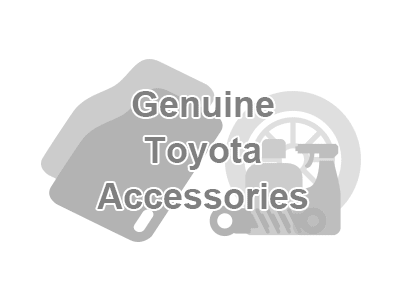

My Garage
My Account
Cart
Genuine Toyota 4Runner Tow Hitch
- Select Vehicle by Model
- Select Vehicle by VIN
Select Vehicle by Model
orMake
Model
Year
Select Vehicle by VIN
For the most accurate results, select vehicle by your VIN (Vehicle Identification Number).
2 Genuine Toyota 4Runner Tow Hitches found
- Toyota 4Runner Towing Options, Towing Hitch KitPart Number: PT228-89460$225.20 MSRP: $322.92You Save: $97.72 (31%)Ships in 1-3 Business DaysProduct Specifications
- Other Name: 4 Runner Hitch
- Class (towing Hitch): Class IV
Fits the following Toyota Models
- 2006-2009 Toyota 4Runner
- Thorough testing of the tow hitch design is conducted both on and off the vehicle to ensure its capabilities including:
- precise computer simulations, used to analyze stress points, assess impact forces and examine design efficiency
- steel prototypes for real-world testing; extensive fatigue testing to assess long-term mechanical durability
- On-road testing to ensure the hitch precisely matches vehicle towing capacity.
- All Toyota hitches are manufactured by expert welders, press operators and painters.
- Dual-layer painting process features a protective paint called electro-deposition coasting or e-coat to help protect against corrosion and the environment, along with a powder topcoat to protect against UV rays and maintain long-term appearance. In contrast, aftermarket tow hitches typically use single-layer paint.
- Advanced, no-drill hitch and wire harness installation process maintains the structural integrity of the vehicle frame; in contrast, some aftermarket towing systems can compromise the vehicle by drilling holes into the steel frame, causing rust and stress points on the vehicle frame.
- Custom replacement fascia pieces, matching vehicle contours and color, are provided if parts of rear fascia need to be removed to accommodate the hitch integrating the appearance of the vehicle bumper and hitch. Aftermarket towing systems can't provide this integration.
- Genuine Toyota hitches have up to 16 connection points to the vehicle frame to transfer the force of towing across the vehicle to reduce stress and preserve the integrity of the body structure; most aftermarket hitches have fewer than 6 connection points.
- Toyota 4Runner Towing Options, Tow HitchPart Number: PT228-89440$228.01 MSRP: $326.94You Save: $98.93 (31%)Ships in 1-3 Business DaysProduct Specifications
- Other Name: 4RUNNER Tow Hitch
- Class (towing Hitch): Class IV
Fits the following Toyota Models
- 2003-2005 Toyota 4Runner








